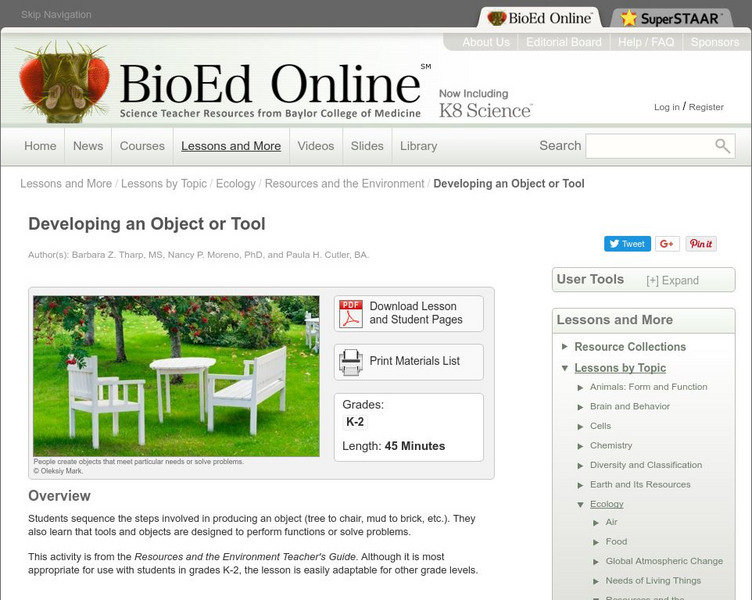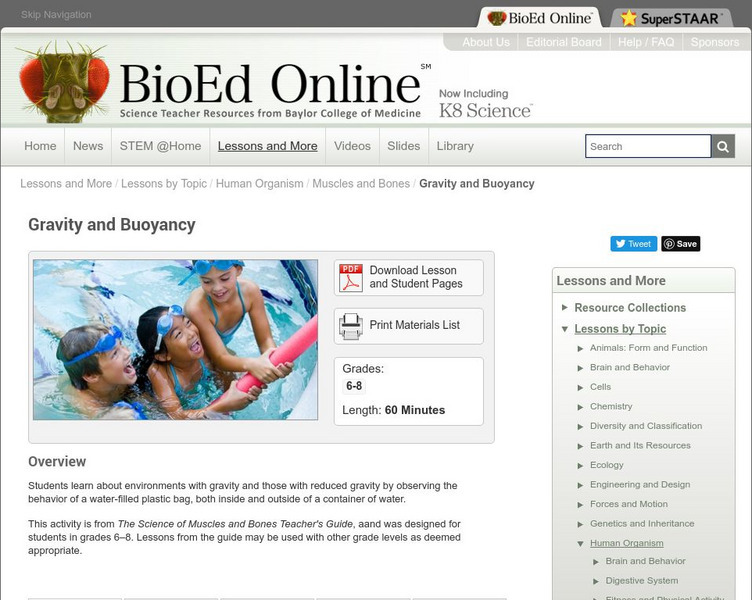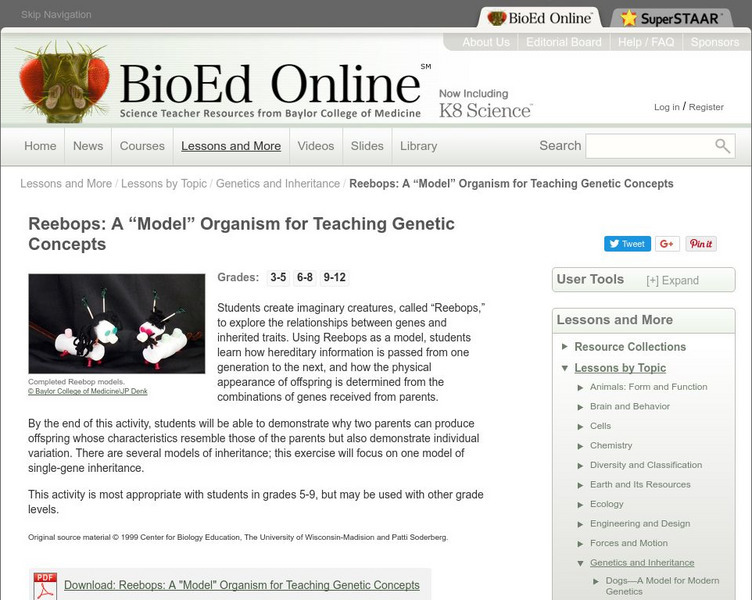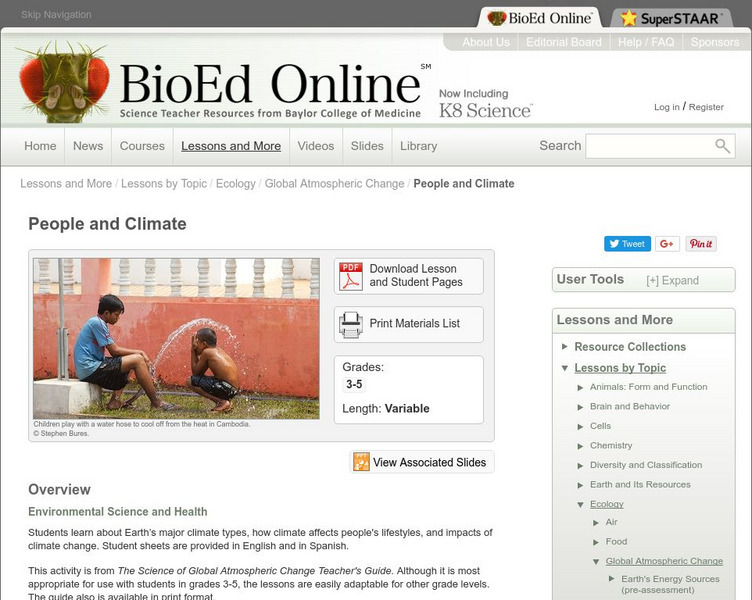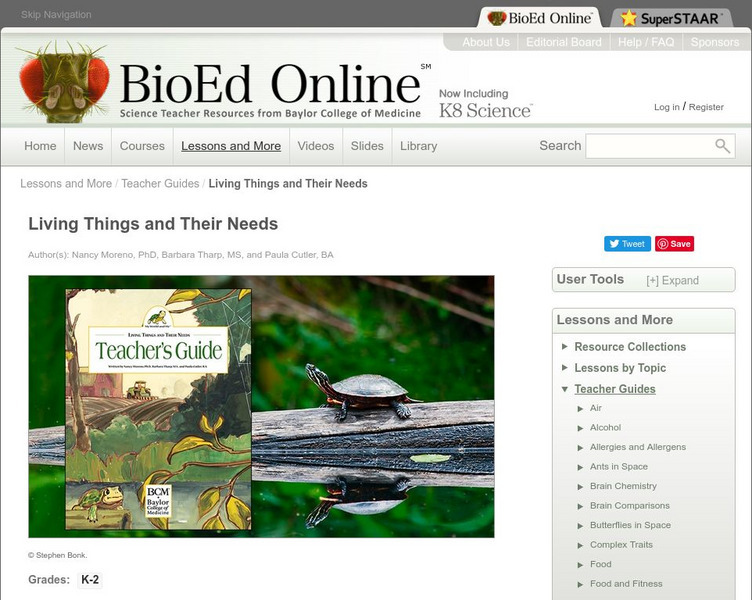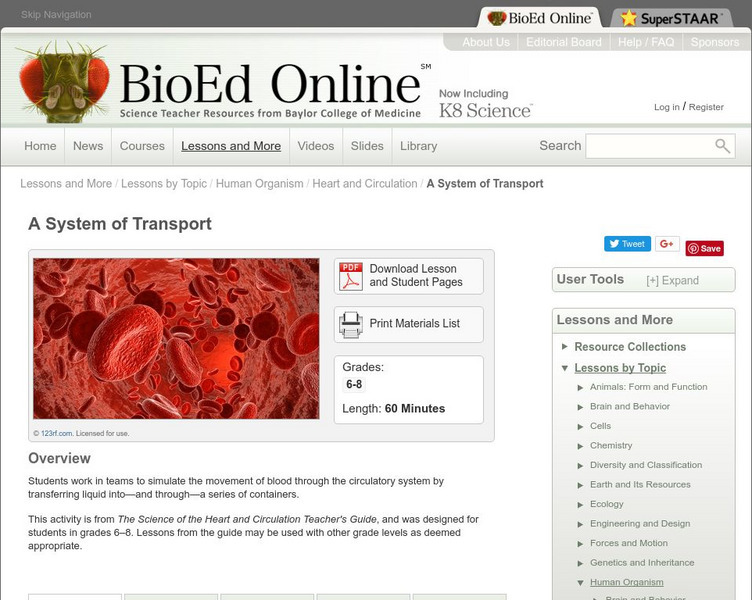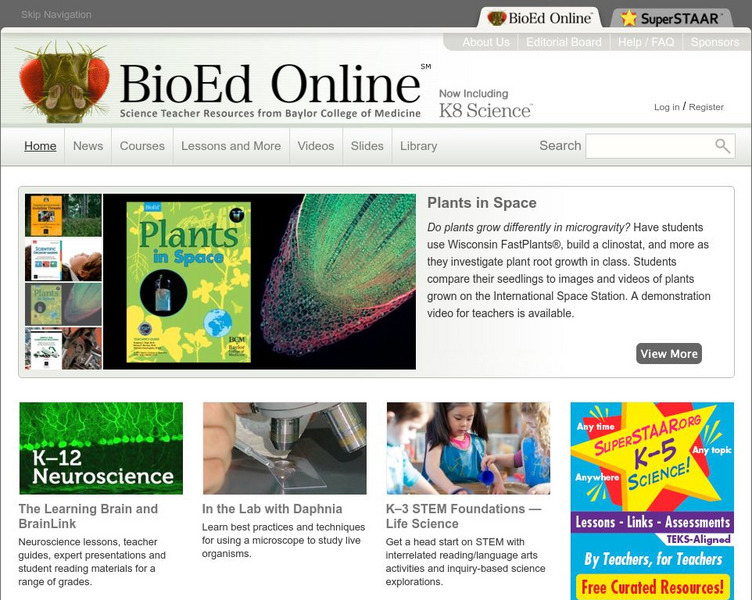BioEd Online
Bio Ed Online: About Air
In this instructional activity students will use popcorn of different colors to model the composition of air. They learn that gases occupy space, air is a mixture of different gases, and the oxygen needed by the human body is not the...
BioEd Online
Bio Ed Online: Dust Catchers
Dust consists of individual particles of different substances. Even air that appears to be clean may contain dust and other pollutants. In this lesson learners make a simple device to collect particles from the air at home or in the...
BioEd Online
Bio Ed Online: There's Something in the Air
Many kinds of gases and particles travel through, and become dispersed in air. Substances in air become concentrated in enclosed spaces. In this lesson to model the movement of pollutants through the air and particle concentration, young...
BioEd Online
Bio Ed Online: Balloon Blast
In the following instructional activity students are asked to devise a plan to measure the distance of a balloon's flight, predict the direction a balloon will travel as it deflates, learn about Newton's Laws of Motion, experience...
BioEd Online
Bio Ed Online: Developing an Object or Tool
In the following lesson plan students sequence the steps involved in producing an object (tree to chair, mud to brick, etc.). They also learn that tools and objects are designed to perform functions or solve problems.
BioEd Online
Bio Ed Online: Rockets
In this series of lessons students will learn about engineering and design principles by designing, building, launching, testing and redesigning their own rockets.
BioEd Online
Bio Ed Online: Introduction to Force and Motion
How is the motion of an object affected by forces that act on that object? Can you predict how the motion of an object will be affected by balanced and unbalanced forces? Is there a relationship between force, mass, and acceleration? In...
BioEd Online
Bio Ed Online: Arm Model
In the following lesson students are required to construct a model arm and learn how muscles and bones work together to achieve efficient movement.
BioEd Online
Bio Ed Online: Center of Gravity
In the following lesson learners will learn about center of gravity and how the body adjusts to the force of gravity to remain balanced.
BioEd Online
Bio Ed Online: Digestion
In this instructional activity students learn about digestion and proteins by observing the action of meat tenderizer on luncheon meat. Student sheets are provided in English and in Spanish.
BioEd Online
Bio Ed Online: Measuring and Protecting Skin
In the following lesson learners will compare and contrast their own skin (including its surface area) with that of an orange. Student sheets are provided in English and in Spanish.
BioEd Online
Bio Ed Online: Respiratory System
In the following lessons for k-5 students are introduced to the structures within the human respiratory system.
BioEd Online
Bio Ed Online: Sleep and Circadian Rhythms
The following lessons help students from grades 6-8 understand sleep and circadian rhythms. Lesson topics iinclude: day and night, seasons, sundails, clocks, sleep and sleep patterns and sleeping in space.
BioEd Online
Bio Ed Online: How Does Light Affect Root Growth?
In this lesson for students from 3rd-12th grades will learn to build an experiment chamber to test the effects of light on Brassica rapa roots, and compare their results with outcomes from plant experiments conducted aboard the...
BioEd Online
Bio Ed Online: Moving Air
In the following lesson plan for students grades 3-5 students observe how changing the temperature affects a small amount of air inside of a bubble. Student sheets are provided in English and in Spanish.
BioEd Online
Bio Ed Online: Gravity and Buoyancy
In the following lesson for grades 6-8, students learn about environments with gravity and those with reduced gravity by observing the behavior of a water-filled plastic bag, both inside and outside of a container of water.
BioEd Online
Bio Ed Online: Reebops: A "Model" Organism for Teaching Genetic Concepts
For this lesson students create imaginary creatures, called "Reebops," to explore the relationships between genes and inherited traits. Using Reebops as a model, students learn how hereditary information is passed from one generation to...
BioEd Online
Bio Ed Online: Heart Rate and Exercise
In this lesson middle schoolers will measure their heart rates after a variety of physical activities and compare the results with their resting heart rates, and with the heart rates of other students in their groups.
BioEd Online
Bio Ed Online: Muscles and Bones
Do you know which foods have lots of calcium for your bones? How do your bones and muscles work together? What are you doing to keep your muscles strong? Students are exposed to 10 activities that will help them address the...
BioEd Online
Bio Ed Online: The Science of Global Atmospheric Change: People and Climate
The impact that climate and climate change have on humans is explored in this lesson plan. Students learn about climate zones, and factors that affect climate, e.g., proximity to the ocean and greenhouse gases. The lesson plan and...
BioEd Online
Bio Ed Online: Living Things and Their Needs Teacher's Guide
This is a free downloadable teacher's guide (PDF) to teach young children (grades K-2) about living things and their needs.
BioEd Online
Bio Ed Online: Living Things and Their Needs: Food for Kids
Students participate in simple cooking activities and learn how cooking makes it easier to eat some foods, such as popcorn. The lesson can be downloaded in PDF format.
BioEd Online
Bio Ed Online: A System of Transport
In this lesson, students are required to work in teams to simulate the volume of blood moving through the circulatory system by transferring blliquid into-and through-a series of containers.
BioEd Online
Bio Ed Online: Biology Teacher Resources
This in-depth site provides middle and high school science teachers with a wide array of free instructional resources, such as slide sets, streaming video presentations, and laboratory activities. Information is provided that is...






